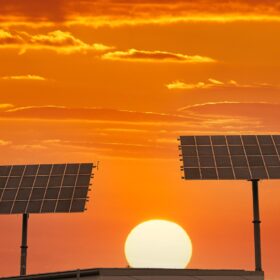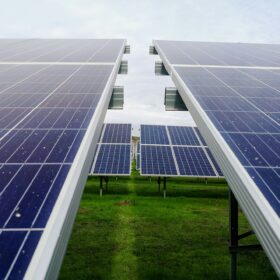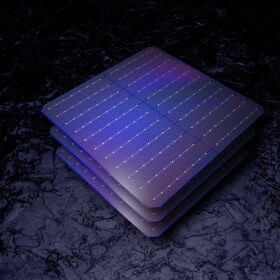Organic solar cell based on trichlorobenzene achieves 19.31% efficiency
An international research team developed an organic solar cell based on a novel non-monotonic intermediated state manipulation strategy. The device reportedly showed non-radiative recombination losses while exhibiting remarkable power conversion efficiency.
Energy Vault unveils design partnership for gravity storage in skyscrapers
The partnership will see architecture and engineering firm Skidmore, Owings & Merrill (SOM), responsible for some of the world’s tallest buildings, incorporate Energy Vault’s gravity energy storage technology into tall buildings in urban environments and deployable structures in natural environments.
IRENA calls for investment in small island nations
The International Renewable Energy Agency (IRENA) discussed the financing landscape for small island developing states (SIDS) and mechanisms to accelerate the energy transition at the United Nations 4th International Conference on Small Island Developing States.
Japan reports radio interference from PV systems
Japan’s Ministry of Internal Affairs and Communications says that since 2021, it has received 44 reports of unwanted radio wave emissions from solar power systems, including interference with defense facilities and emergency wireless equipment. The ministry warns that PV systems may be removed by law if they continue to cause problems.
Funding round opens for off-grid solar across West Africa
The Economic Community of West African States (ECOWAS) is offering grants from $10,000 to $250,000 in the second funding round of the Regional Off-Grid Electricity Access Project (ROGEAP) to develop off-grid solar in 13 West African and sub-Saharan African countries. The application deadline is June 23.
Japanese researchers build 14.3%-efficient bendable, waterproof organic solar cell
Researchers from Japan’s Riken Center for Emergent Matter Science have fabricated an organic solar cell that has achieved waterproofness without reducing flexibility. At 3 micrometers thick, it is thought to be the first cell of its kind to survive a washing machine cycle and retain efficiency after multiple cycles.
European Commission approves €1.4 billion for hydrogen projects
The European Commission has approved €1.4 billion ($1.5 billion) for hydrogen projects, investing in 13 initiatives under the fourth Important Project of Common European Interest (IPCEI), to advance hydrogen technology in mobility and transport applications.
Finland to construct seven solar plants totalling 213 MW
Solar projects across Finland have been given the green light after grant agreements were signed with the European Climate, Infrastructure and Environment Executive Agency. A total €27.5 million ($29.8 million) is being invested across the projects through the EU renewable energy financing mechanism.
Assessing feasibility of solar arrays at airports
A team of researchers developed a methodological framework for assessing solar potential at airports and applied it to seven Indian airports. They found the greatest potential at an airport in Raipur, central India, where they say an at least 21 MW array could be installed without compromising customer experience or safety.
Qcells to deploy Lumet’s fine-line metallization tech
Qcells says it will use Lumet’s fine-line metallization technology for its solar cells, for higher efficiency and lower production costs.











